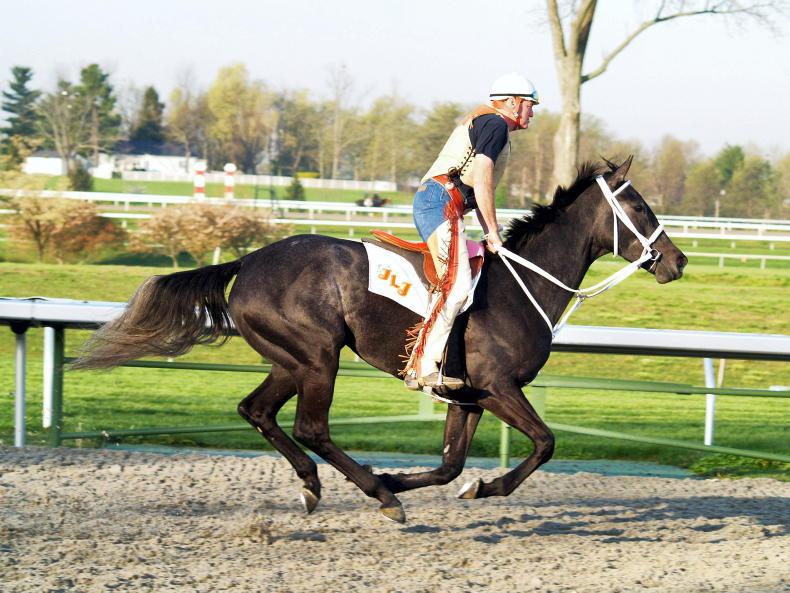2008
RACING in America is in some turmoil following last weekend’s Kentucky Derby. While the sport in the United States has difficulty getting national coverage, the tragedy of Eight Belles’ death has seen unprecedented comment about racing in all media outlets.
The racing world there was rocked when Barbaro was injured, and coverage of his attempted recovery was given huge exposure.
We were shocked with the demise of George Washington during the Breeders’ Cup. Accidents will happen, and any death in racing is regrettable, no matter how high- or low-profile the horse may be,
I have often written here concerning issues of safety, and as an industry we must always be vigilant and proactive.
In America they face two particular problems; the use of drugs in racing, and the issue of dirt racing. Accidents happen on all types of surfaces, but the evidence to date is pretty compelling; synthetic surfaces are safer than the traditional dirt surfaces. Very few tracks have converted, though many may do so or be forced to do so,
The use of steroids in particular has been an issue for many, especially Europeans going to compete in America. Their use is surely counterproductive in the long run, when we should be promoting soundness in the breed.
The present controversy will eventually subside, but racing’s image in America may not recover if action is not taken.
Equine disease numbers are disturbing
1983
AT a time when the Irish breeding industry is doing so well in the marketplace and attracting considerable foreign investment, it is disturbing to discover equine diseases in this country at a new peak. In the words of Irish Thoroughbred Breeders’ Association manager Captain Sean Berry, they are ‘‘serious compared with other years and the worst ever known’’.
The latest unpalatable score sheet is as follows:
Although the problem has not reached epidemic proportions, it is the cause for considerable concern, and Berry was at great lengths to emphasise the need for ‘‘ultra caution’’.
In England there is a similar number of cases, but, with a higher equine population, the percentage is lower.
There is no denying that Abbotstown is doing an excellent job during these troubled times, but it does not escape the fact that the Irish Equine Centre is very slow in getting off the ground. It is no secret that the centre has met with severe internal problems. Its scientific director, Peter Timoney, will have completed two years next month, and yet the Johnstown site still remains a pleasant, modern residence in untouched grounds.
Good time to Give Thanks
1983
WITHOUT doubt, the most impressive performances from a filly this season have been the two group victories by the Jim Bolger-trained Give Thanks, who added to her five-length Lingfield Oaks Trial win with an even more impressive eight-length success in the Musidora Stakes at York last Wednesday.
Worth £30,000 to the winner, the Musidora victory makes Give Thanks a highly marketable property, and some tempting offers have been rolling in. However, Mr and Mrs Ogden White have a very soft spot for the filly.
At the 1981 Newmarket yearling sales, Mrs White went for a tour of the boxes, leaving her husband to discuss business with BBA(I) agent Tom Cooper in the traditional place. She came across the Relko filly out of Parthica, and was so impressed with what she saw that she returned to the bar and persuaded them to come and have a look. Tom Cooper also liked what he saw and successfully bid 33,000gns.
Give Thanks then returned to the White-managed Kiltinan Farms and, before she was sent to Jim Bolger as a two-year-old, she was named Give Thanks, as she was purchased on the eve of the 360th anniversary of Thanksgiving Day.
[Give Thanks went on to win the Irish Oaks and was rated the joint-champion filly of her year in Ireland. The best of her five winners at stud was the classic-placed, Group 2 Falmouth Stakes winner Alshakr, while her granddaughter Harayir won the Group 1 1000 Guineas in 1995]
1958
LAST Saturday’s meeting at the Phoenix Park proved to be a triumphant affair for champion jockey Liam Ward, who for the first time in his career rode four winners in a single afternoon. Another rider to distinguish himself was the Glencairn trainer Seamus McGrath, who landed his own charge, Solarlorum, a winner of the Emo Plate.
Ward started backers of favourites off on the right foot when he partnered Jimmy Lenehan’s charge, Libertad, to an all-the-way victory in the Enfield 2YO Plate. The Aly Khan’s filly was drawn 13 of the 13 starters, and she had to race the whole way by herself on the stands’ side. However, after a smart beginning she was soon clear of her rivals and won easily by two and a half lengths.
Alastair, supported from long prices down to 7/1, put up a fine weight-carrying performance in taking the one-mile Enniskerry Handicap. C.A. Rogers, who trains Alastair, completed a double when he sent out Half Time to win the Sprint Handicap, also ridden by Ward. Padus, who will represent Mick Hurley’s stable in the Irish Oaks next month, ran out a most impressive winner of the Easker Stakes.
Liam Ward paid a highly successful return visit to the same venue on Wednesday evening, when he recorded a treble through the medium of Lao Tzu, Spithead and Beau Henry. Wednesday’s racing was unfortunately one of the least successful affairs associated with this deservedly popular venue, for fields were small.
In one instance, only a couple of youngsters lined up for a valuable juvenile event and, in fact, only 45 horses turned out for this all-flat race programme. While jockey Ward captured the main honours, another rider in N. Brennan was also seen to the fore, winning on Holiday and Tonito.
Ward’s best effort was on Lao Tzu in the 10-furlong Finglas Stakes. This three-year-old, who is trained by Michael Hurley, for whom Ward will ride when available during the season, appeared to be held by the 1/2 favourite, Paddy’s Point, at the distance. However, soon afterwards Paddy’s Point started to hang to the left under pressure and Ward drove Lao Tzu up to win by a neck.
Surprise success for Canteener
1933
CANTEENER’S Irish 2000 Guineas win at the Curragh on Wednesday took everybody by surprise. It would be difficult indeed to say which was the more astonished, the crowd on the course watching the race, or the public away awaiting the result.
The writer was not at the meeting, and the first intimation of the result was from a friend who, not having had a bet on the race, and being, therefore, carefree, offered him (the writer) ‘‘a million to a hayseed that he would not name the winner’’.
‘‘It is Canteener,’’ he went on to say, ‘‘who started at 20/1.’’
Now, except for Mr D.S. Kennedy’s grey gelding having been sent over specially for the race, and with Cliff Richards engaged as his jockey, there was nothing to recommend the victor of the first Irish classic of the season.
Canteener’s owner, a London stockbroker, has possessed only two horses engaged in Irish classic races; with one, Nitischin, he won the Irish Oaks in 1931, and now, with Canteener, he has carried off the Irish 2000 Guineas. It appears to be generally agreed that Canteener owed a lot to his jockey, who rode in the approved Richards style.
Clifford Richards may not be so prominent as his brother, Gordon, but, like the latter, he is all-out all the time to win, and that is the only method in which the public, which pays, rejoices.
It is generally agreed that had Soldier steered a straight course Mr C. L. Mackean’s colt would have won. His jockey, M. Wing, could not be blamed for the colt’s swerving, but it was hard luck on the favourite’s supporters.


 This is a subscriber-only article
This is a subscriber-only article
 It looks like you're browsing in private mode
It looks like you're browsing in private mode








SHARING OPTIONS: